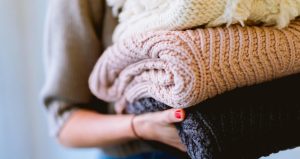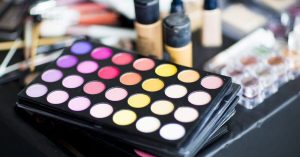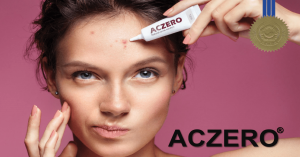Surfactants are widely used in large quantities in food cleansing products, personal care and household products. Sodium laureth sulfate (SLES) is the most common surfactant found in those products. However, are these surfactants safe to be used in baby products?
Surfactants are water soluble ingredients and discharged into the environment after usage. As it is a water soluble ingredient, recycling and reusing of surfactants become difficult. Additionally, manufacturing process of SLES releases formaldehyde and 1,4 dioxane which is highly toxic for the environment. Furthermore, SLES are not biodegradable and persist in the environment for a long period of time.
Considering this, the development of renewable and natural surfactant can be seen as essential. Our Green surfactant, APG, is the latest development in the industries with improved biodegradability through the use of natural sources. It is mild and safe to be used in baby products with our certified food grade surfactants. Alkyl polyglycosides (APGs) is a non-ionic surfactants, made from natural fatty alcohols and glucose derived from renewable plants. Fatty alcohol was extracted and distilled from coconut and palm oil while glucose is extracted from corn and potato starch. Synthesis of APGs can be done in one or two steps using butylglucoside.APGs can be seen special as these are:
- Eco and RSPO certified
- Highly soluble in concentrated alkaline solution and in other electrolyte,
- Highly compatible with various anionic and non-ionic surfactants
- Suitable for baby products with improved mildness
- Consistent in product quality
| No. | INCI NAME | CARBON CHAIN | APG GRADES |
|---|---|---|---|
| 1 | Caprylyl/ Capryl glucoside | C8-C10 | APG0810 |
| 2 | Coco glucoside | C8-C14 | APG0814 |
| 3 | Decyl glucoside | C8-C14 | APG0814 |
| 4 | Lauryl glucoside* | C12-C14 | APG1214 |
APGs can be used in the wide range of personal care applications such as:
- Cosmetics
- Baby shampoo,
- Baby wash
- Baby bottle cleanser
- Baby laundry detergent
- Dish washer
- Hand sanitiser
- Fruits and vegetable cleaners.
Method: 20 people tested by epidermal coating test method for 24 hours with 1% APG active. pH value of APG samples tested remained neutral
Remarks: AES : Alcohol Ethoxylates LAS : Linear Alkylbezene Sulfonate K12 : Sodium Dodecyl Sulfate
According to Epidermal coating test, percentage of irritation remained low as compared to other types of surfactants. APG products show low Skin and Eyes irritation. Also, when it is formulated with anionic surfactants, it reduces the irritation of anionic surfactants.Y-axis: APG surfactants; X-axis: Time (s) Method: Wetting property were carried out for 1% active content at 25℃ by immersion method
Wetting properties of surfactant shows the ability of surfactant to reduce the surface tension of water and improve the spreading of liquid for cleaning process.
According to the immersion test, Capryl Glucoside has the shortest immersion time. Hence, Capryl Glucoside shows a better wetting property!
*However, the most suitable APG grades for baby products is Lauryl Glucoside, the mildest grade. Since baby does not do work out (less sweat) or use any styling products yet, they do not require a deeper cleaning products as what adults require. Hence, mild surfactant with lower wetting property will best fit the baby products.HEAD TO TOE BABY WASH (2in1)
| PHASE | INGREDIENTS | FUNCTION | INCI NAME | W/W % | Supplier |
|---|---|---|---|---|---|
| A | Eversoft UCS-50SG | Main surfactant | Disodium Cocoyl Glutamate | 8 | SINOLION |
| A | APG1214 | Co-Surfactant/Viscosity builder | Lauryl Glucoside | 2 | Jiangsu Wanqi |
| A | Deionized Water | – | – | To 100 | – |
| B | Neoquta 3000KC (G) | Conditioning Agent | Polyquaternium 10 | 0.1 | KCI |
| B | Tetrasodium EDTA | Chelating agent | Tetrasodium EDTA | 0.1 | – |
| B | Glycerin | Humectant | Glycerin | 1.5 | – |
| B | Aquademin | Solvent | – | 79.3 | – |
| C | Rewopal PEG 6000DS | Thickener | PEG-150 Distearate | 1.8 | – |
| D | Aloe vera extract BG | Moisturizer | Aloe barbadensis extract and Butylene Glycol | 0.15 | TEN |
| D | Chamomile extract IN-BG | Moisturizer | Chamomille Recutita (matricaria) flower extract and Butylene Glyco | 0.15 | TEN |
| D | Troycare PE91 | Preservative | Phenoxyethanol & Ethylhexyglycerine | 1.0 | TROY |
| E | Alkest CSO 400H | Solubilizer | PEG 40 Hydrogenated Castor Oil | 0.2 | – |
| E | Perfume | Perfume | Mixing compound | 0.2 | – |
| F | Citric Acid (50%) | pH adjuster | Citric Acid | 0.5 | – |
| Total | 100 |
- Mix Tetrasodium EDTA and Glycerine with water. Heat the solution at 60 ℃ (Phase B)
- Add Neoquta 3000KC into bulk no.1. Heat and mix the solution homogenously, keeping the temperature at 60 ℃
- Add phase A step by step. APG1214, Eversoft UCS-50SG followed by Cocamidopropyl Betaine. Mix the solution homogenously
- Add phase C. Mix until Rewopal is dissolved and homogenous solution is obtained.
- Decrease the temperature to 40-50 ℃. Add phase D step by step with stirring.
- Pre-disperse phase E at room temperature, add phase E to bulk no.5 with stirring.
- Allow cooling. Adjust the pH range to 5.5-6.5
| Parameters | Results |
|---|---|
| Appearance | Clear liquid |
| Color | Clear |
| Odor | Specific |
| pH | 5.5-6.5 |
| Viscosity (cps) | 1500 – 3000,@spindle 3, 18rpm |
BABY SHAMPOO
| PHASE | INGREDIENTS | FUNCTION | INCI NAME | W/W % | Supplier |
|---|---|---|---|---|---|
| A | Eversoft UCS-50SG | Main surfactant | Disodium Cocoyl Glutamate | 8 | SINOLION |
| A | APG1214 | Co-Surfactant/Viscosity builder | Lauryl Glucoside | 2 | Jiangsu Wanqi |
| B | Neoquta 3000KC (G) | Conditioning Agent | Polyquaternium 10 | 0.1 | KCI |
| B | Tetrasodium EDTA | Chelating agent | Tetrasodium EDTA | 0.1 | – |
| B | Glycerin | Humectant | Glycerin | 1.5 | – |
| B | Aquademin | Solvent | – | 84.0 | – |
| C | Rewopal PEG 6000DS | Thickener | PEG-150 Distearate | 2.0 | – |
| D | Aloe vera extract BG | Moisturizer | Aloe barbadensis extract and Butylene Glycol | 0.15 | TEN |
| D | Chamomile extract IN-BG | Moisturizer | Chamomille Recutita (matricaria) flower extract and Butylene Glyco | 0.15 | TEN |
| D | Troycare PE91 | Preservative | Phenoxyethanol & Ethylhexyglycerine | 1.0 | TROY |
| E | Alkest CSO 400H | Solubilizer | PEG 40 Hydrogenated Castor Oil | 0.2 | – |
| E | Perfume | Perfume | Mixing compound | 0.2 | – |
| F | Citric Acid (50%) | pH adjuster | Citric Acid | 0.6 | – |
| Total | 100 |
- Mix Tetrasodium EDTA and Glycerine with water. Heat the solution at 60 ℃ (Phase B)
- Add Neoquta 3000KC into bulk no.1. Heat and mix the solution homogenously, keeping the temperature at 60 ℃
- Add phase A step by step. APG1214, Eversoft UCS-50SG followed by Cocamidopropyl Betaine. Mix the solution homogenously
- Add phase C. Mix until Rewopal is dissolved and homogenous solution is obtained.
- Decrease the temperature to 40-50 ℃. Add phase D step by step with stirring.
- Pre-disperse phase E at room temperature, add phase E to bulk no.5 with stirring.
- Allow cooling. Adjust the pH range to 5.5-6.5
| Parameters | Results |
|---|---|
| Appearance | Clear liquid |
| Color | Clear |
| Odor | Specific |
| pH | 5.5-6.5 |
| Viscosity (cps) | 1500 – 3000,@spindle 3, 18rpm |
Our surfactants uses green and renewable resources which are eco-friendly to the environment. Our mildest APG grade, Lauryl Glucoside, is safe and suitable for baby products. Contact us for more details now.



